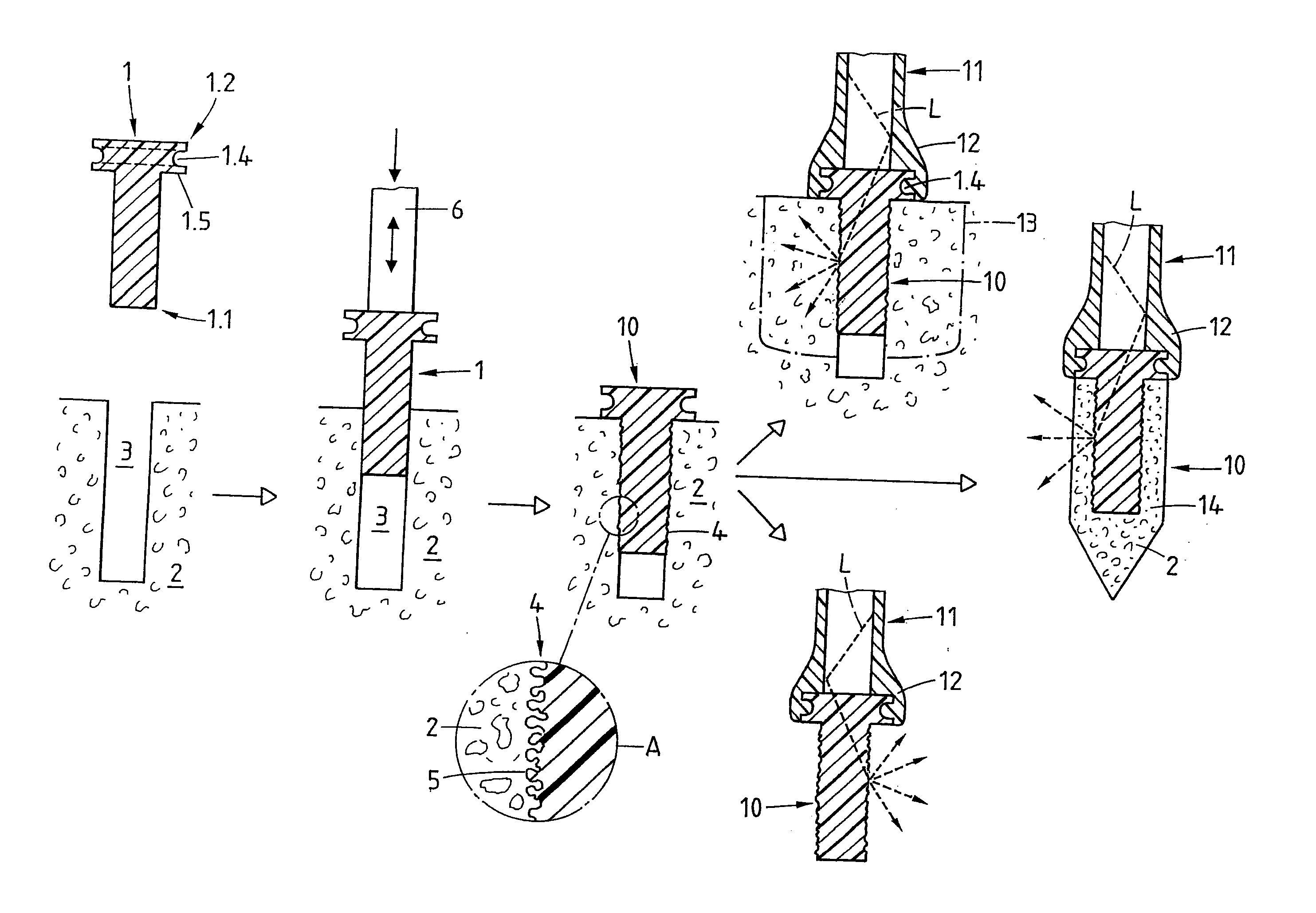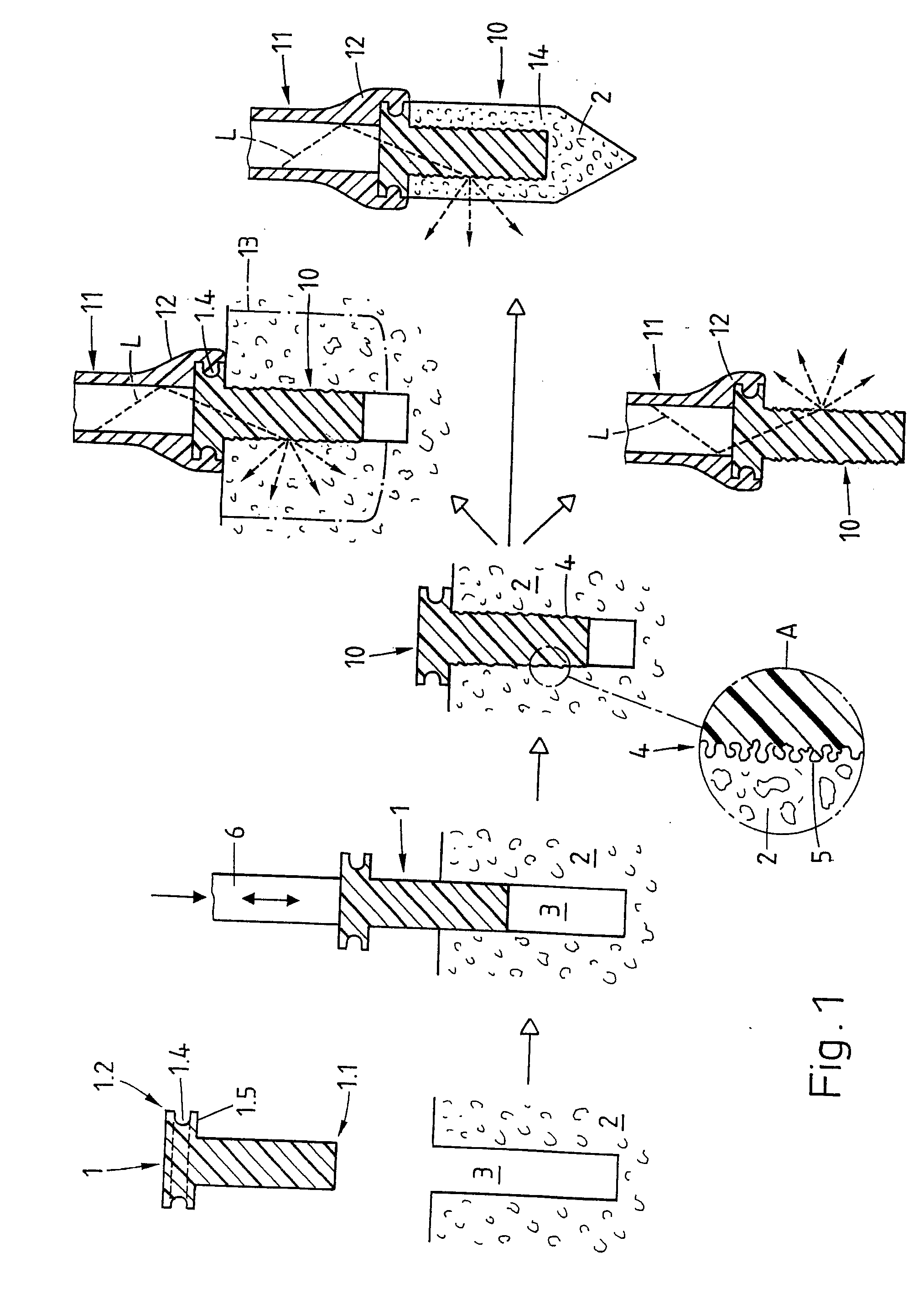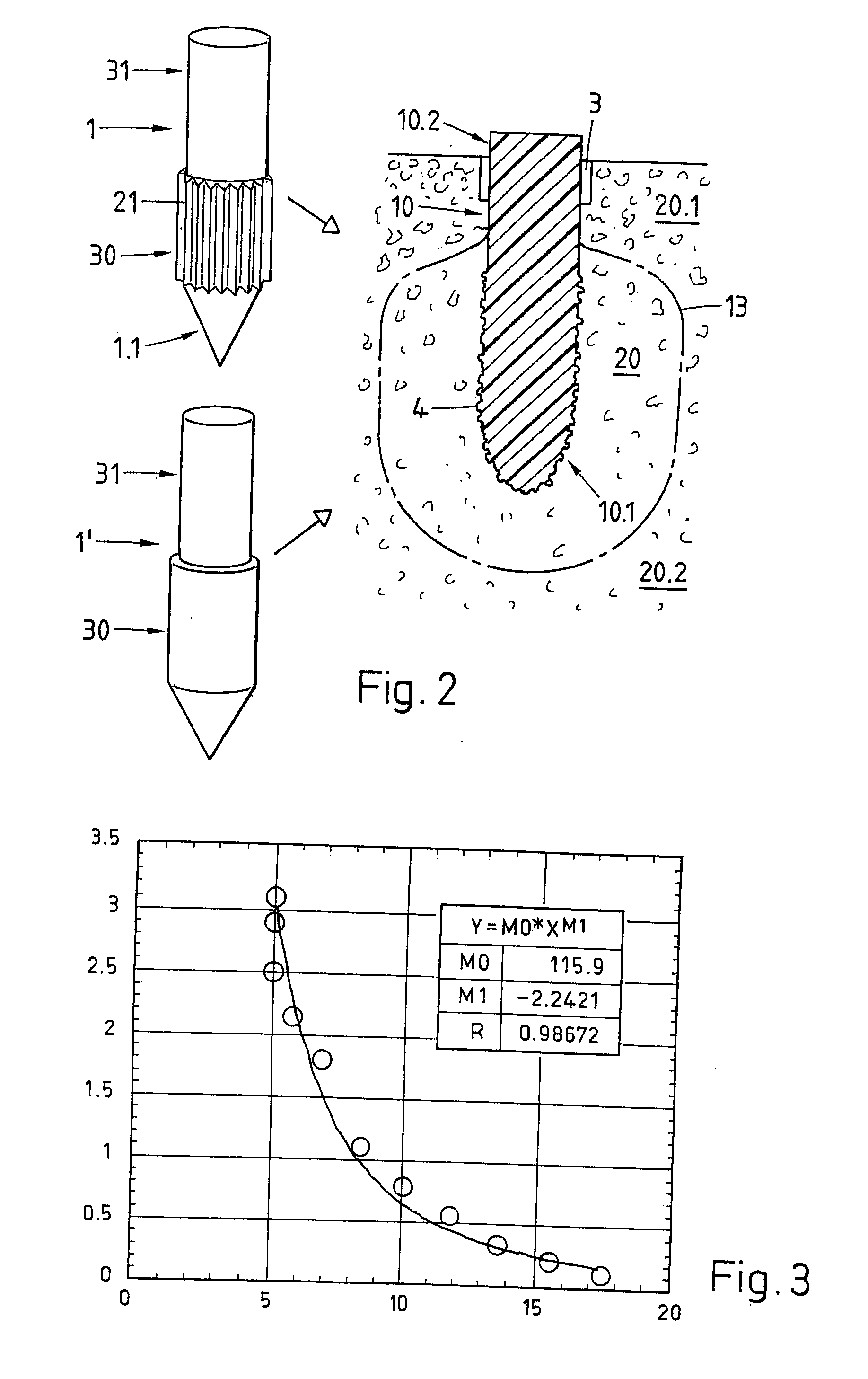[0009] The object of the invention is to create a light diffuser as well as a method for producing the same. The light diffuser according to the invention is to be suitable for most diverse applications, not only medical but also technical applications, in particular however for the aforementioned introduction of diffuse light into
bone tissue (
photodynamic therapy) and for the homogenous illumination of hollow biological structures (hollow organs). Compared to the production of known light diffusers, the method for producing the light diffuser according to the invention is to be simpler and it is to enable a simple adjustment to given circumstances, of the geometry of the space to be provided with diffuse light.
[0012] It is found that the
thermoplastic material penetrating the
bone tissue also lends the
implant a
surface structure ideally suited to scatter light, which is coupled into a proximal face of a transparent
implant in an axial direction, from the
implant into the bone tissue surrounding the implant. In its implanted condition, the implant represents an excellent light diffuser. Prior to the implantation, it is a kind of diffuser blank.
[0017] The properties of an artificial porous shaping material suitable for producing the diffuser according to the invention can be such that it can be removed from the diffuser produced therein e.g. by
dissolution in an appropriate
solvent, by
etching, by melting or subliming. Providing the shaping material has at least locally suitable properties, it can also remain on the diffuser surface and form a kind of diffuser cap, which, due to its
porosity, can further scatter light deflected by the diffuser. Such a diffuser cap of the porous shaping material may already have the shape of a cap, i.e. relatively thin walls, when the diffuser is produced, or it may be appropriately processed afterwards. The diffuser cap can also be fashioned for a specific non-optical additional function or can be shaped appropriately by a subsequent addition or removal of material or by re-forming. The
porosity of the shaping material can be homogenous. In particular if the diffuser cap has specific non-optical additional functions it may be advantageous to fashion the
porosity inhomogeneous and to vary it depending on the function of each part of the diffuser cap. Thus, a diffuser cap can be porous where it is to be interpenetrated by a diffuser material while the exterior surface of the cap is smooth and free from pores in order to minimize friction in the tissue and
contamination, e.g. in the endoscopic application.
[0018] Diffusers according to the invention produced by means of an artificial shaping material suit non-medical and medical applications, but in particular the introduction of diffuse light in
soft tissue or in tissue voids (e.g. blood vessels, respiratory passages or
digestive tract). In that case, the same procedure is followed for the introduction of the diffuse light as with diffusers according to the state of the art, wherein the diffuser according to the invention is coupled with a light conductor or a
light source and is positioned for the application. Then, light of a desired
wavelength is coupled from the light conductor into the diffuser, which scatters the light and thus brings it into the tissue. A particular
advantage of flexible diffusers produced by the above mentioned method, is the fact that due to its flexibility, the diffuser can be bent by the operator using per se known
catheter techniques around a large
solid angle, such enabling a corresponding control of the instrument on one hand and a targeted illumination on the other.
[0020] The use of vital tissue, in particular of bone tissue, as porous shaping material for producing the diffuser from a diffuser blank means that the diffuser blank is implanted and the
light scattering surface structures develop during implantation (in situ). It is not imperative to create an opening (e.g. a bore) in the osseous material prior to the implantation. For example, the cortical layer of a bone can be drilled in advance and the implant positioned in the bore before it is driven by pressure force and simultaneous vibration into the spongiosa, without drilling the latter. With such a diffuser produced in situ, a tumor (or
metastasis) located in the spongiosa can be illuminated in the simplest way. The diffuser implant can remain in the bone tissue for further illuminations, where with its intensive anchoring it may represent a welcome further reinforcement of the osseous tissue debilitated by the tumor. The diffuser implant can also consist of a biologically resorbable light conducting material so that it does not need to be removed after its use for the illumination of the tissue and is gradually replaced by regenerated bone tissue.
[0022] The crucial
advantage of the diffuser produced by implantation in vital bone tissue over known diffusers used for the same purpose, is the fact that precursory drilling is not necessarily needed and that the implant does not necessarily need to be removed, or to be removed immediately after the application of the diffuser for an illumination or activation. This means that no element needs to be removed from the tissue to be treated before or immediately after the treatment and therefore the danger of spreading diseased cells, e.g. metastasizing tumorous cells, is considerably reduced.
 Login to View More
Login to View More  Login to View More
Login to View More 


